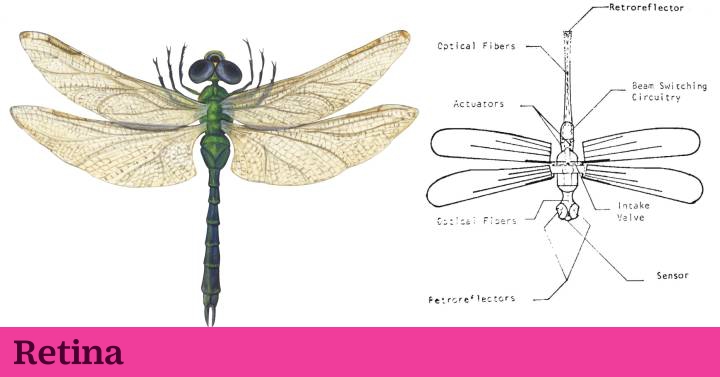FOLLOW
- Follow
A clandestine insect. This is how the CIA described the project that it undertook in April 1974 to create a drone in the style of those that still seem so advanced and futuristic to us today. In some ways, the insect-helicopter went even further. The fundamental objective of that unmanned aircraft so advanced in its time was not to distribute packages, or record aerial shots, or even aspired to go around closing airports. The plan was to create a dragonfly capable of flying at least 100 meters and installing audio surveillance systems. The project was finally abandoned, as the navigation system available at the time, guided by laser, was suitable for straight-line flights and found too many problems in the unpredictable real-world conditions.
The symbiosis between the animal kingdom and that of technology is not uncommon in the world of espionage. Pigeons with cameras, dolphins trained to install explosives and robotic fish are in the history of gadgets that the Central Intelligence Agency has used for the past half century. They also tried to implant a microphone in a cat, but -20 million dollars later- the animal was distracted and was hit by a taxi.
All this fauna of secret agents has been made public in a set of declassified reports collected by The Black Vault , a project that collects documents of this type. "From a technical point of view, there is a high probability that animals will be able to perform many useful, if not unique, tasks that will be of interest to the Department of Defense and the CIA. We hope that these animal systems investigations will be carried out. to more advanced stages of development, "said Carl E. Duckett, who was founder and director of the Science and Technology division of the CIA, in a letter dated December 1967.
Journey to the present
But the will to combine animals and new technologies is not exclusive to the past century or spy programs. A team of researchers from the University of Washington has just published a study on the feasibility of using "insect-based biorrobots" in explosive detection tasks. "We propose a hybrid bioelectronic solution that directly exploits the rich repertoire of olfactory sensors and the sophisticated neurological and computational framework of the olfactory system of insects," they explain.
In this case, the animal partners are grasshoppers. After checking how exposure to explosive chemicals activated certain neurons in these insects, the researchers designed a system to, through minimally invasive surgery, be able to measure their electrophysiological responses and create a detection system. "In summary, our study is the first test of how biological olfactory systems can be 'sequestered' to develop a cyborg approach to chemical detection." Another insect that apparently is also suitable for this task is, according to researchers, the red cockroach.
In the sea you can also
At the end of January, the journal Science Advances published another example of this trend, with jellyfish as the main animal. The study, by two researchers at Stanford University, presents these animals as "one of the most energy efficient underwater vehicles" and a "potential source of advantages" to address the great challenges of robotics.
"We present a biohybrid robot that uses integrated microelectronics to induce swimming in live jellyfish. The measures show that the propulsion can be substantially expanded by controlling the contractions of the body to an optimum frequency range faster than natural behavior," they say. The cyborg jellyfish that result from this experiment swim three times faster, while the animal's metabolic expenditure only doubles. "This robot uses between ten and a thousand times less external energy per mass than any other aquatic robot reported in the literature," they promise.
The system designed by the researchers applies periodic electric currents to incite muscle contractions in the jellyfish. The resulting biorrobot, the researchers conclude, has the potential to expand ocean exploration techniques and opens the door to future improvements in the control of biohybrid jellyfish, as well as the incorporation of microsensors that allow information to be collected from the environment.
MORE INFORMATION
A fern from a London zoo, first floor to take a selfie
Ode to ants, muses of algorithms






